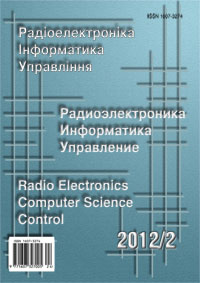MODELS FOR EMBEDDED REPAIRING LOGIC BLOCKS
DOI:
https://doi.org/10.15588/1607-3274-2012-2-21Keywords:
combinational circuit, repair, modeling, verification, software model.Abstract
The goal of this article is to improve the quality and reliability of digital systems-on-chips by creating an infrastructure for embedded testing, diagnosis, optimization and repairing through the use of hardware redundancy and reduce the speed of functional operations. The models of combinational circuits, focused on solving real-world problems of embedded repairing components of the logic devices, are proposed. The logical scheme is improved by using operational and control automaton for modeling digital devices, and focused on solving practical problems of embedded repairing logic components by increasing the processing time and additional hardware costs to create wrapper of addressable elements. The proposed structures can also be used for hardware modeling functionalities of digital projects through the use of PLD, which allows significantly improving the performance of software model verification. The proposed solution of embedded repair of gates for combinational circuits makes it possible to comprehensively solve the problem of autonomous repair of digital system-on-chip through the use of time and hardware design redundancy.Downloads
Published
How to Cite
Issue
Section
License
Copyright (c) 2014 V.I. Hahanov, Murad Ali Abbas, E.I. Litvinova, I.V. Hahanova

This work is licensed under a Creative Commons Attribution-ShareAlike 4.0 International License.
Creative Commons Licensing Notifications in the Copyright Notices
The journal allows the authors to hold the copyright without restrictions and to retain publishing rights without restrictions.
The journal allows readers to read, download, copy, distribute, print, search, or link to the full texts of its articles.
The journal allows to reuse and remixing of its content, in accordance with a Creative Commons license СС BY -SA.
Authors who publish with this journal agree to the following terms:
-
Authors retain copyright and grant the journal right of first publication with the work simultaneously licensed under a Creative Commons Attribution License CC BY-SA that allows others to share the work with an acknowledgement of the work's authorship and initial publication in this journal.
-
Authors are able to enter into separate, additional contractual arrangements for the non-exclusive distribution of the journal's published version of the work (e.g., post it to an institutional repository or publish it in a book), with an acknowledgement of its initial publication in this journal.
-
Authors are permitted and encouraged to post their work online (e.g., in institutional repositories or on their website) prior to and during the submission process, as it can lead to productive exchanges, as well as earlier and greater citation of published work.






